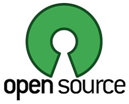WELCOME TO AN OPEN WORLD!
March 28, 2014
 Have you notice that “OPEN” is a word more and more present in the IT ecosystem? Open source, open innovation, open data, open education resources, open hardware and so on… What does it imply for you?more–>
Have you notice that “OPEN” is a word more and more present in the IT ecosystem? Open source, open innovation, open data, open education resources, open hardware and so on… What does it imply for you?more–>
Open Source

“Open Source” is probably the first thing that comes to mind when we talk about “openness” in IT.
But don’t be confused: “open” doesn’t mean “free.” A program is “free software” if the program’s users have the four essential freedoms (as defined by the Free Software Foundation):
- The freedom to run the program, for any purpose (freedom 0).
- The freedom to study how the program works and change it so it does your computing as you wish (freedom 1). Access to the source code is a precondition for this.
- The freedom to redistribute copies so you can help your neighbor (freedom 2).
- The freedom to distribute copies of your modified versions to others (freedom 3). By doing this you can give the whole community a chance to benefit from your changes. Access to the source code is a precondition for this.
But if you want to be able to study how the program works it’s necessary to see its source, then “free” implies “open”. And very often, an “open source software” is associated with an “open source license” that guarantees that it’s also “free”. The “real” open source licenses are listed on the “Open Source Initiative” web site (http://opensource.org/ ).
Anyway Open Source software is now everywhere in IT, and in most case it has become a kind of “reference”.
Open Innovation

Open Innovation is a new paradigm by which organizations use both internal and external knowledge to innovate. It has been promoted by Henry Chesbrough in his book Open Innovation: The New Imperative for Creating And Profiting from Technology.
Open Innovation is all about “co-creation” with external organizations in order to be more efficient and to accelerate the development of new technologies. It’s often opposed to “Closed Innovation” the classical way of thinking.
Open Data
![]()
“Open data is data that can be freely used, shared and built-on by anyone, anywhere, for any purpose”. This is a definition found on the “Open Knowledge Foundation” blog.
According to this principle, data is now more and more available and inspiring a lot of new software. By consequence it leverages innovation.
Open Educational Resources (“OER”)

“OER” are education materials (documents and media) that can be freely used, adapted and customized.
With this kind of materials it’s actually possible to educate everyone. That’s why UNESCO is very active in promoting OER. (http://www.unesco.org/new/en/unesco/themes/icts/open-educational-resources/ )
Open Hardware

Until recently most of us considered that the “openness” is by nature limited to immaterial things (software, data, resources, etc). But what can you do with open source software if you don’t have an affordable hardware to use it? Then the “Open Design” movement promotes the development of physical artifacts of technology based on the “open source” principle. Hardware design (mechanical drawings, schematics, etc), in addition to the software that drives the hardware, are all released with the “Free and Open Source Software (FOSS)” approach.
Moreover, 3D printers come with new exiting capabilities, for example the concept of “self-replicating machine” (a construct that can autonomously reproduce itself).
Examples:
- The famous Raspberry PI : http://www.raspberrypi.org/
- RepRap (3D printer – “Self-replicating machine”) : http://reprap.org/wiki/RepRap
- Arduino : http://www.arduino.cc/
Finally, “open your mind”
Don’t forget that in IT “everything is going fast,” but “open things go faster.” Then do not hesitate to share your ideas, your software, your data and your resources.
And enjoy the “Openness of IT”…
Links
- Open Source Initiative : http://opensource.org/
- Free Software Foundation : https://www.fsf.org/
- Open Innovation Community : http://www.openinnovation.net/
- Creative Commons : http://creativecommons.org/
- Open Knowledge Foundation : http://okfn.org/
- Open Definition : http://opendefinition.org/
[MCD1]Confused by the numbering here ?

 English | EN
English | EN 